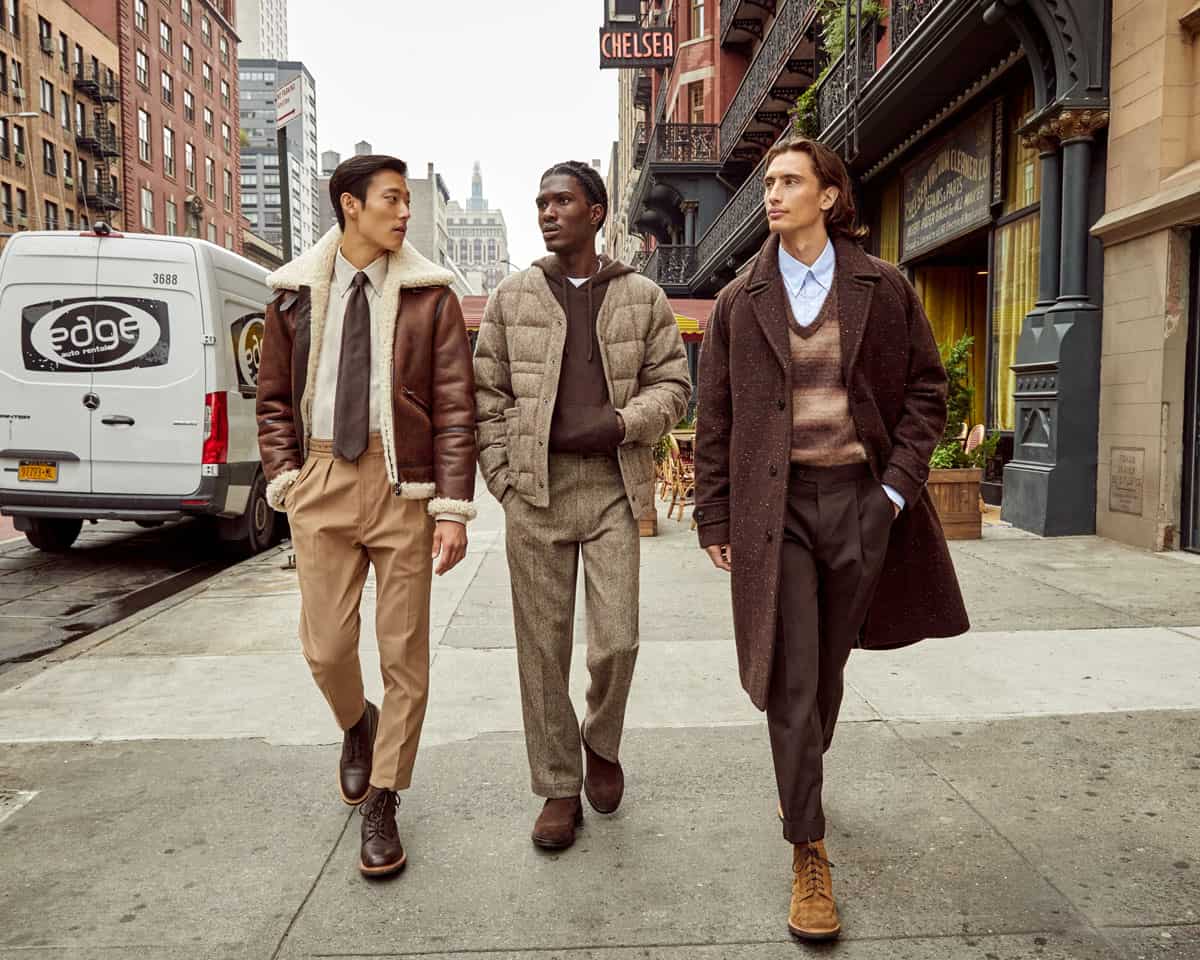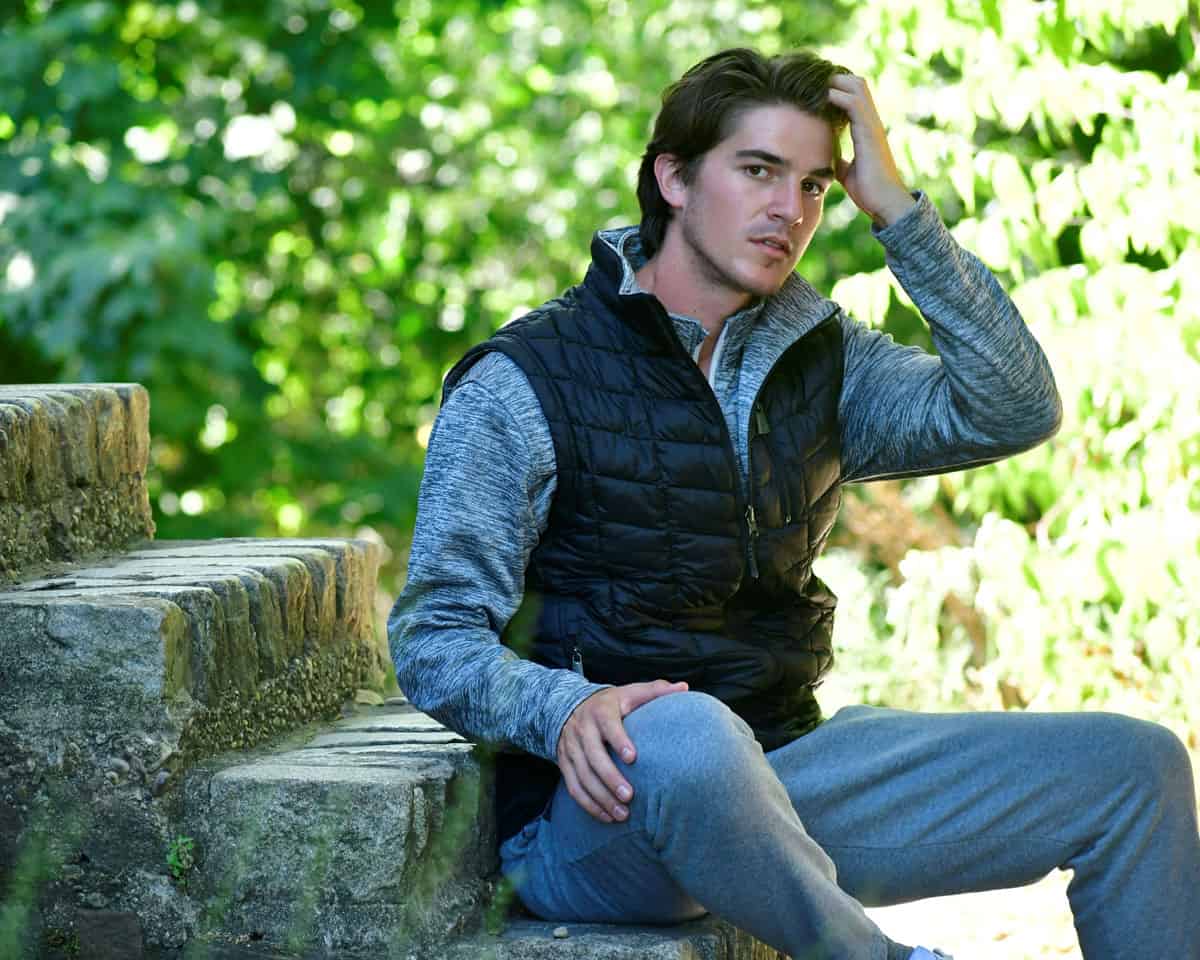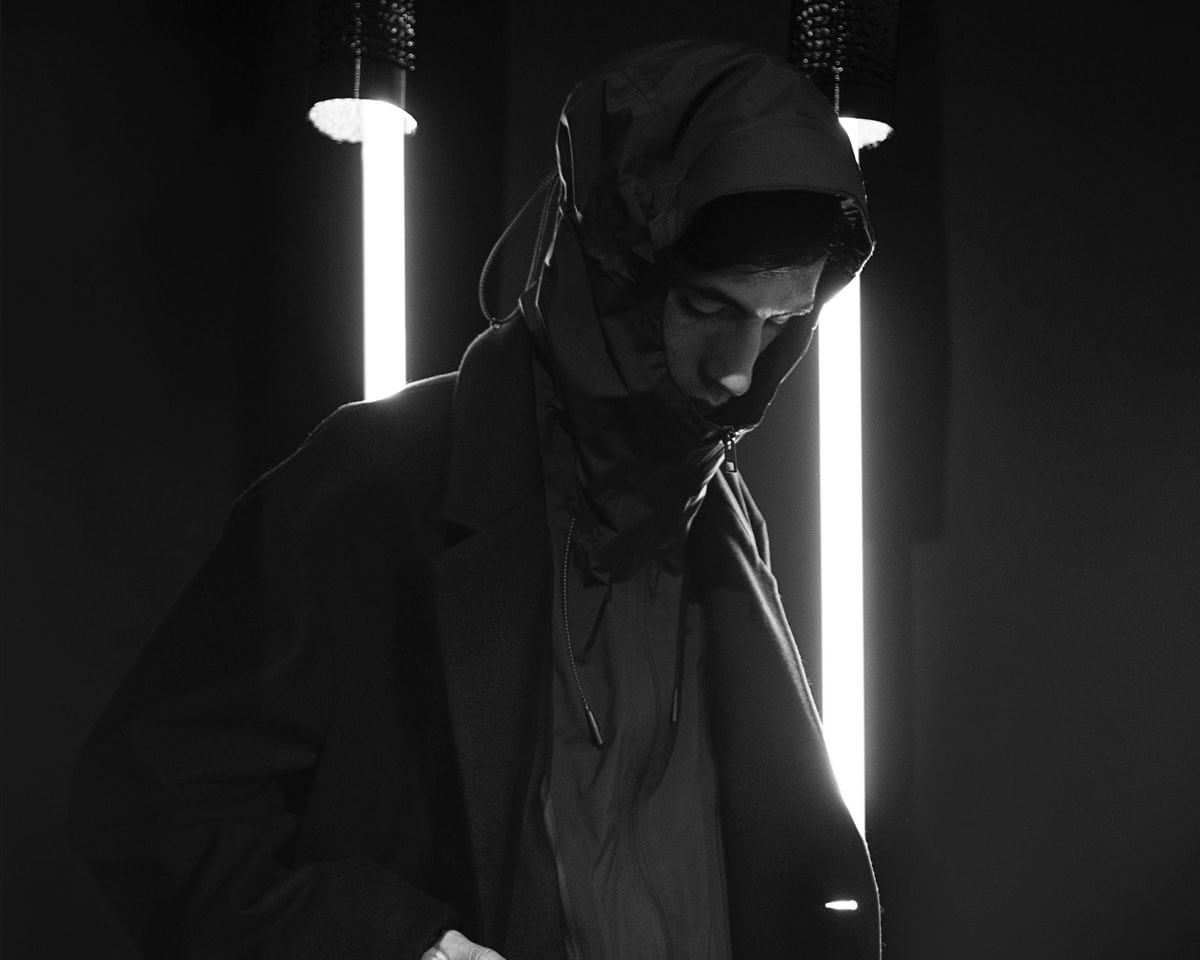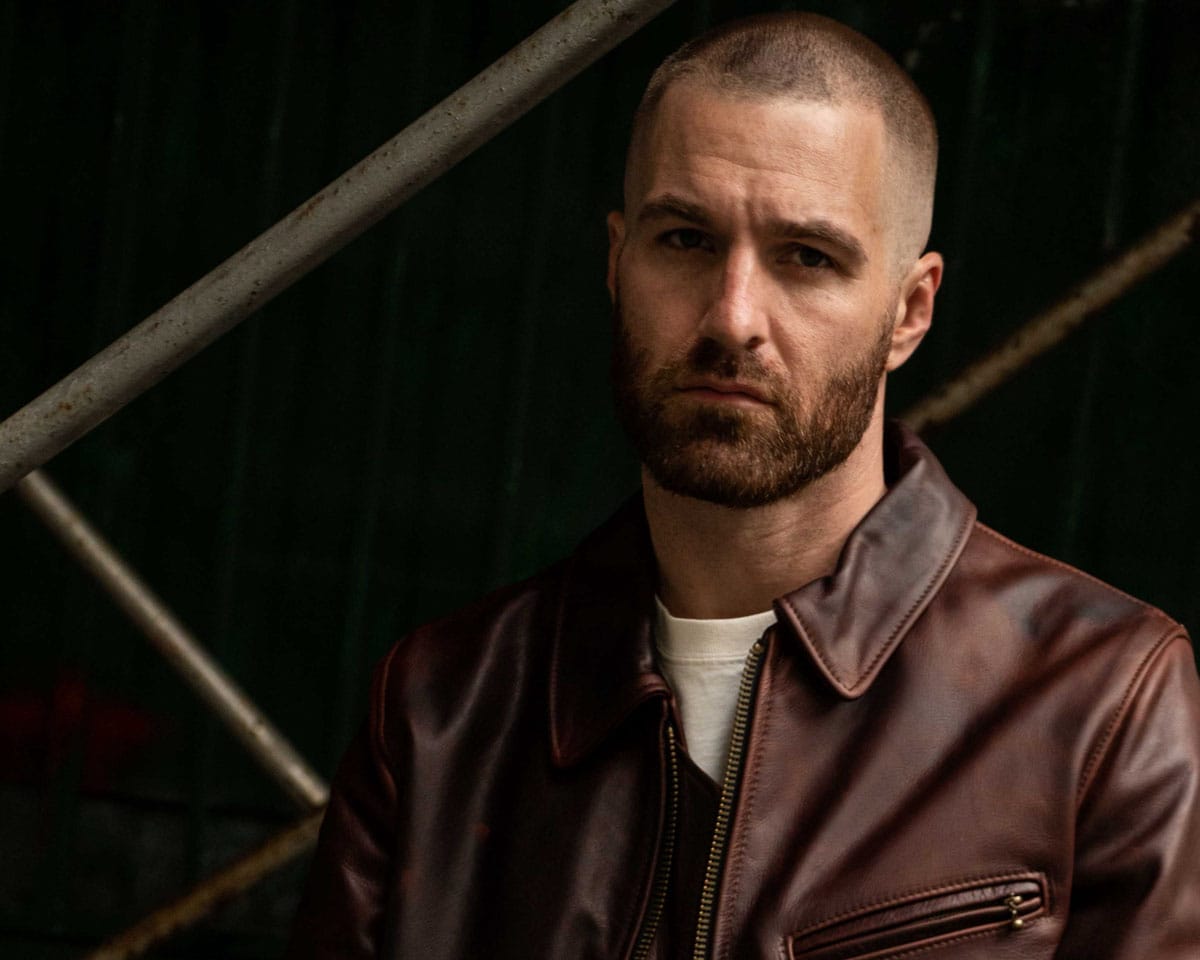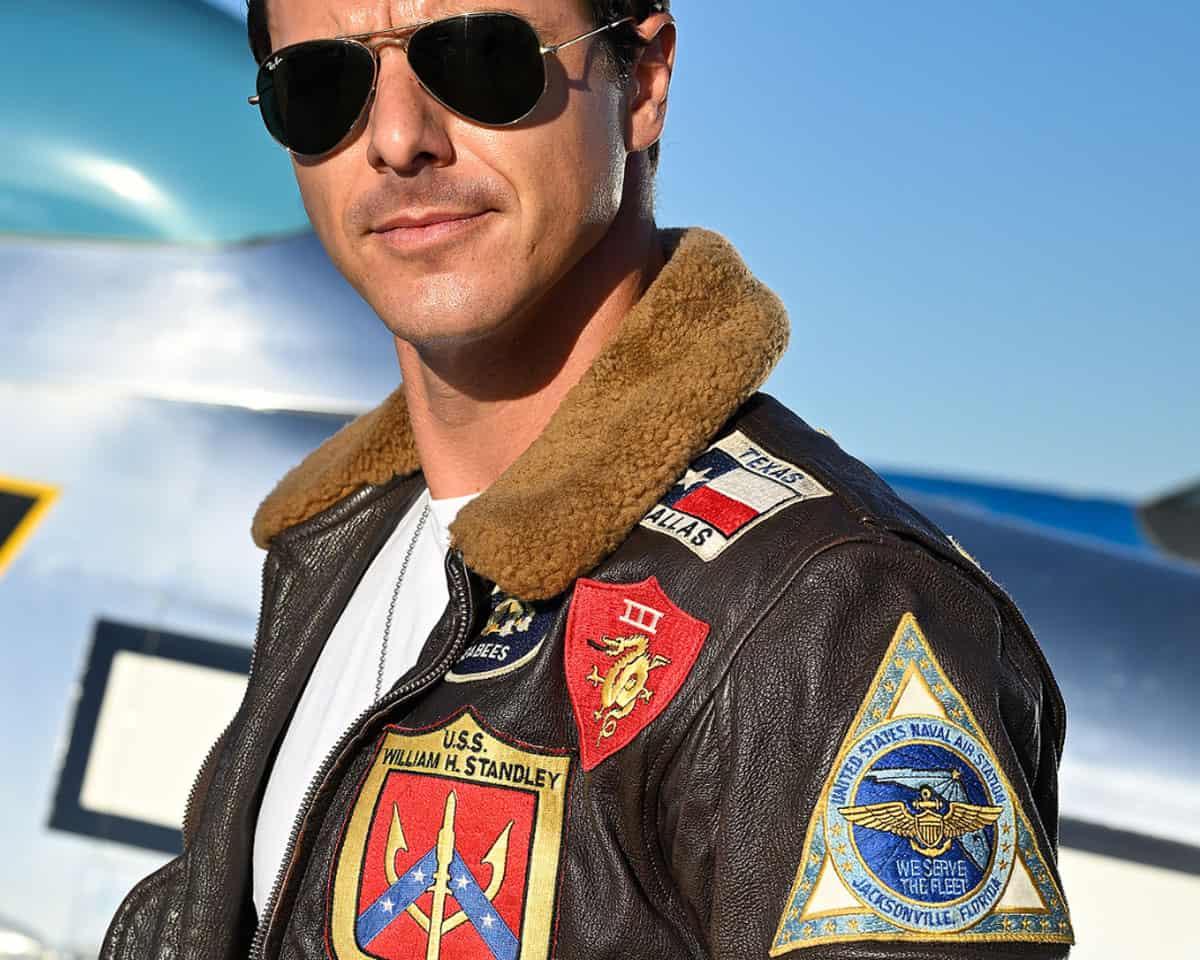FROM OUR JANUARY ISSUE: CHANGE IN THE AIR

The entire MR team is proud to present our January 2024 issue. Haven’t gotten your copy, yet? Feel free to page through a digital copy at Issuu, and we’ll continue to post individual stories on MR-mag.com. If you haven’t been getting MR in print, be sure that you are on our mailing list for future issues by completing this form.
While walking near Manhattan’s Financial District recently, I noticed a definite change in the air regarding outerwear. The quarter-zips, down vests, and puffer coats have not disappeared completely, but there’s clearly a movement toward fashion. And different versions of fashion at that.
Most notably, there’s a strong retro trend happening, with guys wearing longer, dressier, tweedier coats that bring the 1980s to mind. Picture Mickey Rourke in 9 1/2 Weeks, wearing a DB, peak-lapel coat that dropped below the knees, over a cashmere crewneck and dress pants. Or John Cusack in Say Anything (hoisting a boom box over his head) wearing a slouchy wide-lapel trench coat over a graphic T-shirt and sweats. An opposite trend is rooted in technology and hybrid models: coats offering season-spanning attributes like removable hoods, linings, and even heating systems.
A third trend is toward lighter-weight product: the infamous chore coat, the “shacket,” the CPO, these hybrid sportswear items sell well in early fall and serve to extend the selling season.
Fortunately for retailers, fashion innovation in the fall ’24 market should curtail the need for November/December markdowns come next winter. Says designer Todd Snyder, “We’ve seen tremendous growth in outerwear this year and plan to see it continue in 2024. Our customer is reacting to buy-now, wear-now styles, unlike seasons past when stocking up on cold-weather outerwear early in the season was more common. Looking ahead, we’re reacting to this shift by adding pieces like shorter bomber and chore styles, more layering pieces, and true cold-weather topcoats and novelty coats. We’ve learned that our customer buys seasonal outerwear when the weather changes. We began testing the buy-now, wear-now approach this fall by introducing key styles like The Walking Jacket, a classic field coat that resonated during the long transitional season. While down-filled styles continue to downtrend, our topcoat and novelty outerwear business in luxe fabrics is showing huge growth in all markets.”

At Norwegian Wool, Michael Berkowitz has had much success with his innovative marketing tactics, including billboards on MetroNorth trains coming into Grand Central Station, a few steps from his Madison Avenue store/showroom. “What’s selling best is classic looks in luxury fabrics. Our customers want quality, versatility, and performance. Our average price point is $1595, an opening price in luxury stores. A top seller this season is our cashmere blend blazer with a neck bib that readily disappears into the blazer for outdoor to indoor use. It retails for $1095 and started selling early in the season. Our customers love its multi-function design.”
Renoir is a brand known primarily for its value-priced tailored clothing and strong in-stock programs (around 80,000 suits are kept in stock in a Los Angeles warehouse). According to national sales manager Patrick Chan, the company recently added a few basic wool outerwear pieces to the mix. “We introduced a car coat and a shorter jacket with a bib that wholesaled for $85. These coats did well enough that we’ve expanded the offering to include a range of retro plaids and herringbones, also with the removable bib. These styles perfectly reflect the vintage trend and also work for suburban guys who never go outside, moving from house to garage to car, basically living in a climate-controlled bubble. These guys just need a lightweight layer short enough to wear comfortably while driving.”
Caroline Massel at Gruner & Co. points out that fall ’23 outerwear business started slowly, with one of the warmest fall seasons on record. “Fortunately, temperatures dropped in December and business picked up nicely. It helps that with the casualization of America, the definition of outerwear has expanded to include many hybrid sportswear pieces. Our Hart Schaffner Marx outerwear is noted for its luxury fabrics, classic menswear patterns, attention to detail (undercollars, linings, pockets!), and exceptional service. Our Gruner1949 collection incorporates knit sportscoats that can be worn year-round.”
At Thermostyles, founder Jack Wu offers the lightweight seasonal outerwear that guys need in October and November and some luxurious tech solutions for when the mercury drops. He divested himself of his interest in Rainforest to pursue his expertise in luxury, a wise move as the market moves towards investment dressing. Key clients include Saks, Patrick James, and Darien Sport; suggested retails range from $195 to $750, with hybrid sportswear pieces at $145. Many of the styles have detachable bibs, collars, and hoods, and in a nod to sustainability, all material in the fall 2024 collection is 100% recycled, much of it using down alternatives like eco-down, which keeps heat close to the body. Wu keeps the focus on simple, modern, urban styles like a sophisticated 3-in-1 CEO jacket with leather trim, a military-style car coat with lots of pockets and interesting buttons, and a touch of red on zipper pulls. Of course, what put Thermostyles on the map is its optional interior heating system with a three-setting control panel for 100, 110, or 120-degree heat settings. The technology is an option on many styles, adding $200 to the retail price. Many believe that’s a small price to pay for extra warmth.
Similarly, Black Dog Showroom is repping a new brand out of Italy called Palto. Using lightweight, water-resistant fine wools and cashmere rendered in sophisticated topcoat, peacoat, and field coat models, each coat is a modular system that can include button-off quilted vests and zip-off protective hoods. These allow the wearer to adapt the coat to his needs depending on the temperature. Black Dog’s Katie Liu points out that the vests can be bought in tonal or contrast colors, allowing retailers to create their own style variations.
Another Black Dog outerwear brand, Nobis, also projects a strong emphasis on function for fall ‘24. “Most brands are emphasizing transitional outerwear with a focus on layerable, lightweight pieces,” says Nobis’s Robin Yates. “It’s crucial for designers to speak to modularity, layering, and multi-functionality, to perform in changing weather conditions.”
Massel at Gruner explains the impact of technology in both the design and production stages. “We’ve incorporated skiwear technology into our core topcoats. Our rainwear has protective properties: wicking, waterproofing, antimicrobial, and breathability. Almost everything has stretch for comfort. And lots of details. We even incorporate reflective tape on a tailored raincoat to provide safety. It’s a small detail but much appreciated by customers who walk in the evening.”
For the hard-core puffer fan, James Chung at Triple F.A.T. Goose says that “short puffers have been outperforming other styles in men’s, while longer length parkas have done particularly well on the women’s side. Across the board, mixed media styles have been doing quite well for us. (Editor’s note: a trend we’re seeing in various categories.)
“Our customers are seeking not just high-quality outerwear, but also products that align with their values,” says Chung. “Sustainability seems to be on the minds of more customers, and because of this, many have been asking about the origins of our materials. They’re happy to hear that for several seasons, we’re exclusively using recycled down and recycled performance fabrics, a move that reflects our commitment to the environment. As we continue to innovate, Triple F.A.T. Goose products embody not only our legacy of quality but also our commitment to produce eco-conscious fashion. We’ve taken early steps in this direction and hope to make significant strides in future seasons.”
At Schott NYC, best known for its iconic motorcycle jackets, Don King is seeing customers gravitate to leathers that show unique character “in feel and coloration. Our new waxy pullup cowhide leather collection and hairy rough-out suedes have been well received. We continue to develop styles with a more supple and softer hand using mid- to lighter-weight leathers. Supple leathers make the garment easy to wear and medium-weight soft skins are more versatile. Our best-selling leather styles have been cafe racers and waist-length, mechanic-inspired models that are timeless and ageless. The brown family is gaining attention for its sophistication and color variation as it breaks in. Due to climate changes and milder winters, our retailers are selling leathers for a longer period into winter, often from August through February. Many West Coast and Southern stores are carrying leather year-round.”
“For us, sheepskin coats of all sorts are working, but then we offer the biggest selection of authentic military and aviation-styled jackets made in the USA,” says Jacky Clyman at Cockpit, long known for its faithful reproductions of military styles with a real cult following. “We’re moving a lot of the business towards direct-to-consumer. This is something we’ve been forced to do as department stores are impossible to deal with. Many big stores no longer have merchants making decisions, but rather accountants who look at sell-throughs often impacted by staff never bringing goods to the floor. Too often, products get lost in their storage!” Clyman is a strong believer in moving deliveries closer to the season. “The concept of making a huge amount of samples twice a year and having to deliver so far in advance of the season makes no sense. Customers are no longer looking to make purchases that far in advance, so the current timing merely adds to excessive markdowns.”
Nobis’s Yates maintains that retailers are looking to tighten their assortments for fall 24, focusing on brands that bring the most value to their customers. “Both buyers and consumers are buying more consciously. The entire outerwear industry needs to re-evaluate seasonal timing, pushing back launches to correspond with when consumers shop. Instead of clearing seasonal product in mid-season sales, why not wait until end-season sales? Later deliveries should encourage full-price selling through November and December, with clearance sales between February and March.”
However, Schott’s King is not promoting later deliveries. “We’ve found that retailers are more willing to try new categories early. Before, they were buying narrow and deep but now they’re testing the breadth of the line. One of our strengths is that we maintain inventory year-round, allowing our retail partners to try new items with a low upfront commitment. We’ve also seen that they’re pre-booking early rather than holding open-to-buy for in-season purchasing. Our retailers have confidence in the quality of our leather outerwear; we’ve seen great success with our independent and specialty stores expanding into lifestyle categories like sweaters and flannels, as well as new lightweight textile outerwear. Our waxed canvas, corduroy, flight satin, and duck canvas jackets have seen the most growth as we move into 2024.”
A final note to retailers: Bring in new fashion early, saving the more classic heavier-weight coats and jackets for later in the season. In this way, retailers can alleviate the need for markdowns just when cold weather should be inspiring regular-price purchasing on fresh-looking goods.



